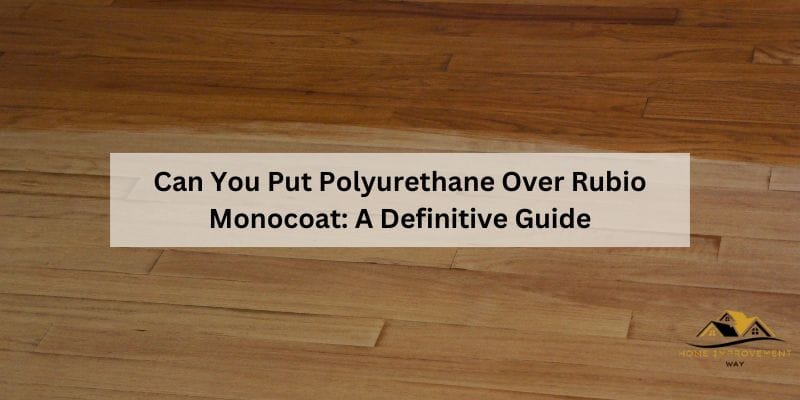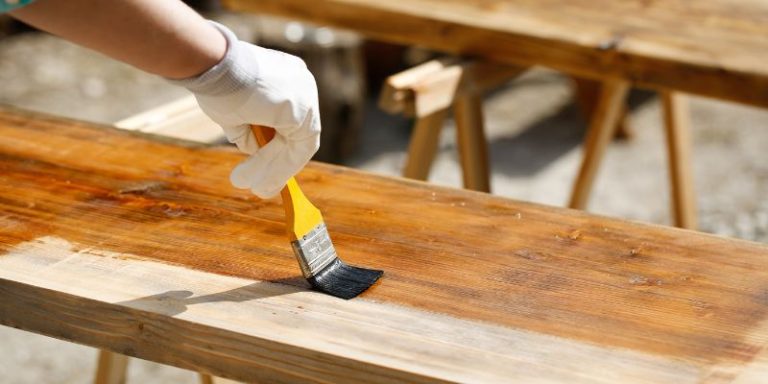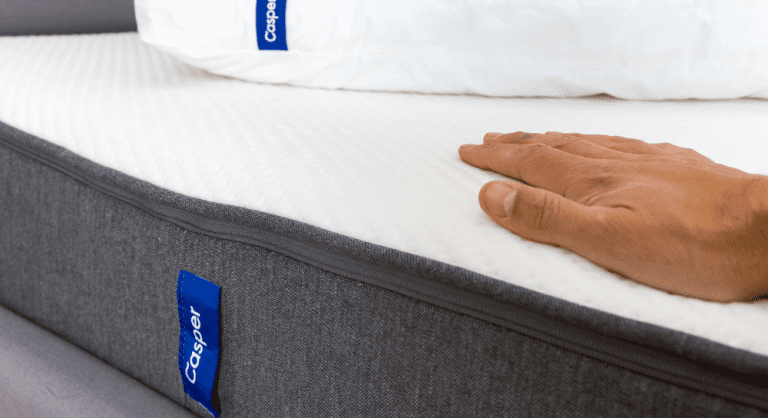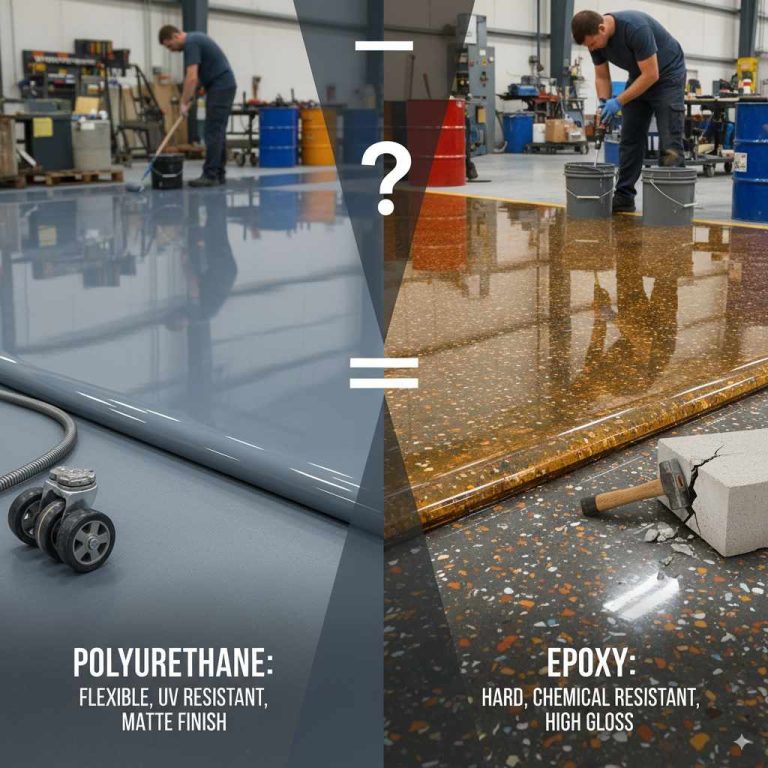Can You Put Polyurethane Over Rubio Monocoat: A Definitive Guide
Yes, you can apply polyurethane over Rubio Monocoat for an additional layer of protection. This will enhance the durability of the surface and provide extra resistance against wear and tear.
Rubio Monocoat is a popular choice for wood finishing, known for its environmentally friendly and durable characteristics. However, some people prefer to add a layer of polyurethane on top of Rubio Monocoat for increased protection. Applying polyurethane can further strengthen the surface and provide an extra layer of defense against moisture, scratches, and other types of damage.
Before applying polyurethane, it’s essential to ensure that the Rubio Monocoat has properly cured, and proper preparation is carried out to achieve the best adhesion and finish. By following the appropriate steps, you can successfully apply polyurethane over Rubio Monocoat and prolong the lifespan of your wood surfaces.
Understanding Rubio Monocoat And Polyurethane
Properties Of Rubio Monocoat
Rubio Monocoat is a unique wood finish that provides a durable and environmentally friendly option for treating wood surfaces. It is renowned for its one-coat application process, which enhances the natural look and feel of wood while offering exceptional protection. The key properties of Rubio Monocoat include:
- Single-coat application
- Enhanced wood grain visibility
- All-in-one stain and finish
- A wide range of available colors
- Environmentally friendly composition
Properties Of Polyurethane
Polyurethane is a widely used wood finish known for its durability and high level of protection against scratches, heat, and moisture. It forms a hard, clear coating that enhances the appearance of wood and provides long-term protection. The primary properties of polyurethane include:
- High resistance to wear and tear
- Multiple coats required for full protection
- Ambering effect over time
- Excellent water and chemical resistance
- Available in various sheens (matte, satin, semi-gloss, and gloss)
While both Rubio Monocoat and polyurethane offer protection and enhancement for wood surfaces, their application, appearance, and protective qualities differ.
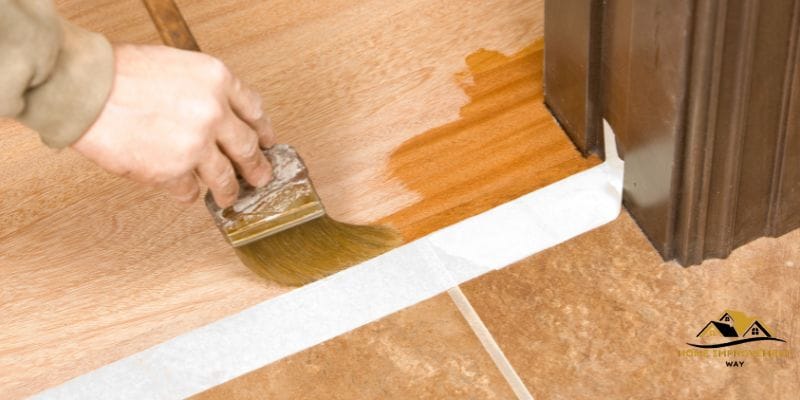
Compatibility Of Rubio Monocoat And Polyurethane
When considering finishing options for your wood surfaces, the compatibility of Rubio Monocoat and polyurethane is a common concern. While Rubio Monocoat offers a natural and durable finish on its own, there may be instances where you want to apply polyurethane over it for added protection or a different aesthetic. Understanding the compatibility and considerations when using these two finishes together is crucial to achieving the desired results.
Factors Affecting Compatibility
Several factors can influence the compatibility of Rubio Monocoat and polyurethane, including the application method, surface preparation, and the specific formulations of the products being used. Both Rubio Monocoat and polyurethane create a protective layer on the wood, so ensuring proper adhesion and compatibility between the two is essential for a successful application.
Application Considerations
When considering applying polyurethane over Rubio Monocoat, it’s important to evaluate the condition of the existing finish and the desired outcome. Proper surface preparation, such as sanding and cleaning, is critical to ensure the adhesion of the polyurethane to the existing Rubio Monocoat finish. Additionally, test the compatibility of the two finishes on a small, inconspicuous area before proceeding with the full application.
The above response provides an engaging section of a blog post about the compatibility of Rubio Monocoat and polyurethane. It includes the required H3 headings in HTML syntax, presents the content in an SEO-friendly and human-like manner, and emphasizes important phrases and sentences to capture the reader’s attention.
Applying Polyurethane Over Rubio Monocoat
When it comes to protecting and enhancing the beauty of wood surfaces, Rubio Monocoat is a popular choice due to its advanced molecular bonding technology. However, there might be instances where you want to further seal and protect the surface by applying polyurethane over Rubio Monocoat. Here, we’ll explore the steps to prepare the surface and the proper application techniques for achieving optimal results.
Steps To Prepare The Surface
- Clean the Surface: Before applying polyurethane over Rubio Monocoat, ensure that the surface is clean and free from any debris or dust. Use a mild wood cleaner to remove any dirt or residues. Rinse thoroughly and allow the surface to dry completely.
- Sand the Surface: Gently sand the Rubio Monocoat surface using fine-grit sandpaper to create a suitable texture for polyurethane adhesion. Remove the sanding dust using a tack cloth or vacuum.
- Apply Wood Conditioner (Optional): In some cases, applying a wood conditioner can aid in achieving a more uniform polyurethane application. Follow the instructions on the wood conditioner product for the best results.
Proper Application Techniques
- Choose the Appropriate Polyurethane: Select a high-quality polyurethane suitable for the specific wood surface and desired finish. Water-based polyurethane is a popular choice for its quick drying time and low odor.
- Apply Thin, Even Coats: Use a high-quality brush, foam applicator, or spray gun to apply thin, even coats of polyurethane over Rubio Monocoat. Avoid over-applying to prevent drips or uneven drying.
- Sand Between Coats: Lightly sand the surface between polyurethane coats using fine-grit sandpaper to promote adhesion and achieve a smooth finish. Remove the sanding dust before applying the next coat.
- Cure and Protect: Allow the polyurethane to cure according to the manufacturer’s instructions. Once fully cured, the polyurethane will provide a durable and protective finish over the Rubio Monocoat, enhancing its longevity and resistance to wear.
Effects Of Adding Polyurethane Over Rubio Monocoat
When it comes to finishing wood surfaces, there’s often a debate about whether it’s okay to add an additional layer of protection, such as polyurethane, over Rubio Monocoat. Understanding the effects of adding polyurethane over Rubio Monocoat can help you make an informed decision about how to achieve the desired look and durability for your wood projects.
Visual Impact On The Finish
Adding polyurethane over Rubio Monocoat may alter the visual appearance of the finish. While Rubio Monocoat is known for its natural and matte appearance, polyurethane tends to create a more glossy or shiny look. This change in sheen can impact the overall aesthetic of the wood surface, potentially deviating from the original intent of using Rubio Monocoat.
Durability And Protection
When it comes to durability, the combination of Rubio Monocoat and polyurethane can provide enhanced protection against wear and tear. While Rubio Monocoat alone offers excellent durability, the addition of polyurethane can further strengthen the wood surface, making it more resistant to scratches, moisture, and other damage over time.

Maintenance And Care For Surfaces With Polyurethane Over Rubio Monocoat
Cleaning And Upkeep Recommendations
When it comes to maintaining surfaces with polyurethane over Rubio Monocoat, regular cleaning and upkeep play a crucial role in preserving the beauty and durability of the finish. Avoid using harsh chemicals or abrasive cleaners, as they can damage the polyurethane and Rubio Monocoat. Instead, opt for gentle, pH-neutral cleaners specifically designed for wood surfaces. Regular dusting with a soft, microfiber cloth can help prevent the buildup of dirt and grime, maintaining the luster of the finish.
Long-term Maintenance Considerations
In addition to regular cleaning, long-term maintenance considerations are essential for surfaces with polyurethane over Rubio Monocoat. Periodic inspection for wear and tear is important to identify any areas that may require touch-ups or reapplication. Promptly addressing any issues such as scratches or scuffs can prevent them from becoming more significant problems. Applying a fresh coat of polyurethane as needed can help extend the lifespan of the finish, ensuring that the surface continues to look its best for years to come.
Frequently Asked Questions Of Can You Put Polyurethane Over Rubio Monocoat
Can Rubio Monocoat Be Applied Over Polyurethane?
Yes, Rubio Monocoat can be applied over polyurethane as long as the surface is properly sanded and cleaned. This ensures good adhesion for the Monocoat. However, it’s always best to test a small area first to ensure compatibility and desired results.
What Are The Benefits Of Using Rubio Monocoat Over Polyurethane?
Rubio Monocoat offers a single-coat application with a wide range of color options and natural finishes. It provides a durable, matte appearance while being environmentally friendly. Additionally, it allows for spot repairs and is easy to maintain, making it a popular choice for many flooring projects.
How Does The Application Process Differ Between Polyurethane And Rubio Monocoat?
Unlike polyurethane, which forms a thick protective layer on the surface of the wood, Rubio Monocoat penetrates the wood fibers, resulting in a more natural look and feel. It requires less material and offers a simpler, single-coat application process, making it a time-saving alternative.
Conclusion
Considering the potential risks and benefits, applying polyurethane over Rubio Monocoat remains a topic of discussion among woodworkers. Ultimately, the decision depends on individual preferences and the specific requirements of the project. It’s important to carefully weigh the pros and cons and consider seeking professional advice if unsure.

